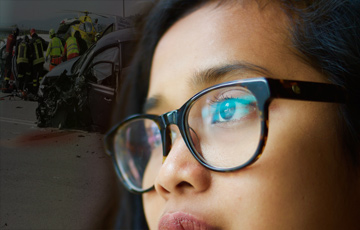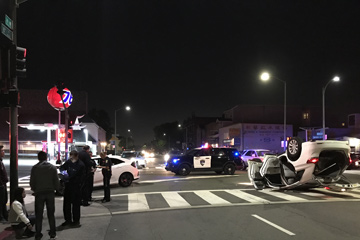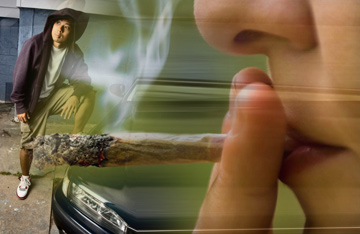
IT'S NOT EASY BEING TEEN
When it comes to teen driving statistics, none is more startling than this: a THIRD of all teen deaths are caused by motor vehicle crashes.1
Consider this: Motor vehicle collisions are the leading cause of teen death and kill more teens than suicide, homicide, cancer or any other medical condition.1
MORE TOUGH STATS TO SWALLOW
Every 15 Minutes: 36,560 lost lives on US roads in 2018. That means that someone died every 15 minutes due to an automobile collision.2

Bad Math: On average, a drunk driver kills someone every 51 minutes and injures someone every 2 minutes. That's over 720 people injured or killed each day because of drinking and driving.3
2,526 Teens Dead: 2,526 US teens took their last breath during a motor vehicle crashes in 2017. Another 300,000 teens were injured and required treatment in emergency rooms.1, 2
Unsweet 16: Crash risk is extremely high during the first months of a new driver being licensed. In 2017, data shows that the crash rate for 16-year-olds is 150% higher than it is for 18-19-year-olds. The first 500 miles driven by a newly licensed driver are the most challenging and dangerous.1

The Need for Speed: Speeding is an ongoing issue for teen drivers. In 2016, it was a factor in 32% of the fatal crashes that involved teen drivers.2
Coming Unbuckled: Compared with other age groups, teens have the lowest rate of seat belt use. In 2017, 5.9% of teen passengers reported rarely or never wearing a seat belt recently.4
Nighttime is the Wrong Time: In 2017, 40% of motor vehicle crash deaths among teen drivers and passengers occurred during the nighttime hours, and 51% occurred on Friday, Saturday, or Sunday. 1
Asleep at the Wheel: Driving while tired can be dangerous for drivers of any age, but for young drivers, the dangers of drowsy driving can be compounded by lack of driving experience. 55% of drowsy driving crashes involve drivers under 25 years of age. In addition, studies show that teens who get too little sleep are more likely to engage in risky driving behaviors like drunk driving, texting while driving, riding a bicycle without a helmet, and failing to use a seatbelt.6,7
Males at Risk: In 2017, the motor vehicle death rate for male teen drivers was over two times higher than the death rate for female teen drivers.1
The More the Unmerrier: The presence of teen passengers increases the crash risk of unsupervised teen drivers, and the risk increases as the number of teen passengers increase.1
Road Worries: 20% of nighttime weekend drivers tested positive for some type of drug in the 2013-2014 National Roadside Survey. 5

High and Getting Higher: In just a six-year period, there was a shocking 48% increase in weekend nighttime drivers who tested positive for THC. 5
By the Numbers: By the time teens reach the 12th grade:
- 66% of students have tried alcohol
- 50% have tried marijuana
- 20% have tried prescription drugs without a prescription1
Data Sources
- Centers for Disease Control and Prevention website - CDC.gov
- National Highway Traffic Safety Administration - NHTSA.gov
- Mothers Against Drunk Driving (MADD) - MADD.org
- Children's Hospital of Philadelphia - teendriversource.org
- National Highway Traffic Safety Administration / US DOT 2013-2014 National Roadside Survey
- National Sleep Foundation - thensf.org
- Sleep Foundation - sleepfoundation.org

